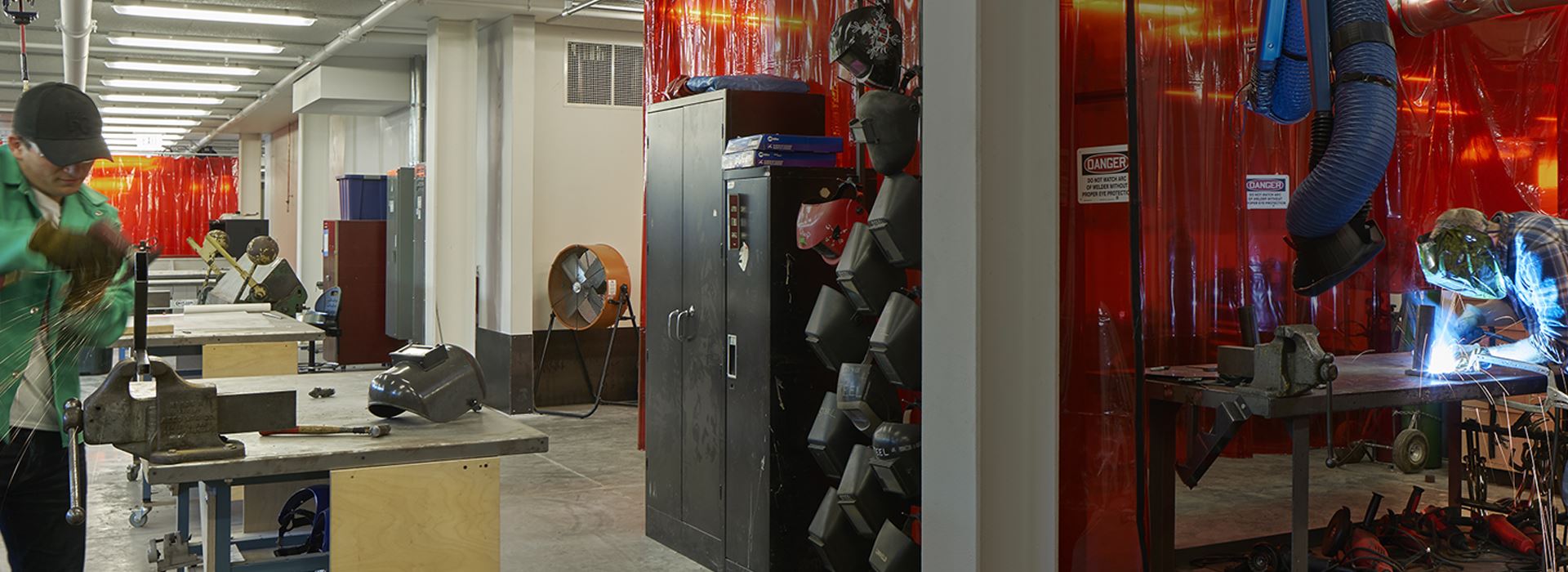
©2024 This excerpt taken from the article of the same name which appeared in ASHRAE Journal, vol. 67, No. 11, November 2024.
What You Need To Know: Makerspace Infrastructure, Safety & Security
By Kelley Cramm, P.E.
About the Author
Kelley Cramm, P.E., is a mechanical technical manager at Henderson Engineers in Lenexa, Kan.
Makerspaces are on the rise in education facilities at all levels. They offer hands-on training for arts, sciences and engineering; and they support interdisciplinary learning. Makerspace programs are also a result of increased interest and demand for hands-on skilled trades jobs. Welding, electrical line workers, carpenters, HVAC technicians, plumbers and mechanics all require a combination of traditional book learning and hands-on learning. These spaces pose a host of infrastructure, safety and code challenges. This column will discuss strategies for creating safe and successful makerspaces. Metalworking, woodworking, threedimensional (3D) printing, spray painting and laser cutting will all be addressed. Makerspaces are typically infused with technology and may be equipment intensive. They promote experiential learning, which has been shown to be effective in increasing student motivation for STEM (science, technology, engineering and math) learning. They help students develop problem-solving skills and encourage collaboration and creativity.2 Engineering education has shifted from a sole focus on books and theory to a combination of theory and applied learning with hands-on experience.3 It used to be that “shop classes” were only for high school students who wanted to learn a trade and not go to college. This is no longer true. We’ve seen an increase in demand for makerspaces starting in elementary school through high school, community college and universities. There are many advantages to combining theory with hands-on learning. It makes for a more well-rounded learner who is ready to tackle the real world.
In my previous column on science laboratories in schools, I discussed the importance of identifying hazards and working with the environmental health and safety officer on a risk assessment and hazard mitigation strategy.4 Hazards that may be present in makerspaces include flammable paints and paint thinners, combustible metal and/or wood dust, off-gassing from laser and plasma cutters, off-gassing from 3D printers, and welding fumes. Understanding what will be done in the space is the first step in assessing hazards and developing engineering controls to minimize risk of exposure to the occupants. The space will be dynamic over time, but basis of design assumptions on hazardous materials should be documented and communicated to provide a record
Read the Full Article
ASHRAE Members have free access to the full-text PDF of this article as well as the complete ASHRAE Journal archives back to 1997 in the Free Member Access Area.
Non-members can purchase features from the ASHRAE Bookstore. Or, Join ASHRAE!
Return to Featured Article Excerpts
Return to ASHRAE Journal Featured Article Excerpts